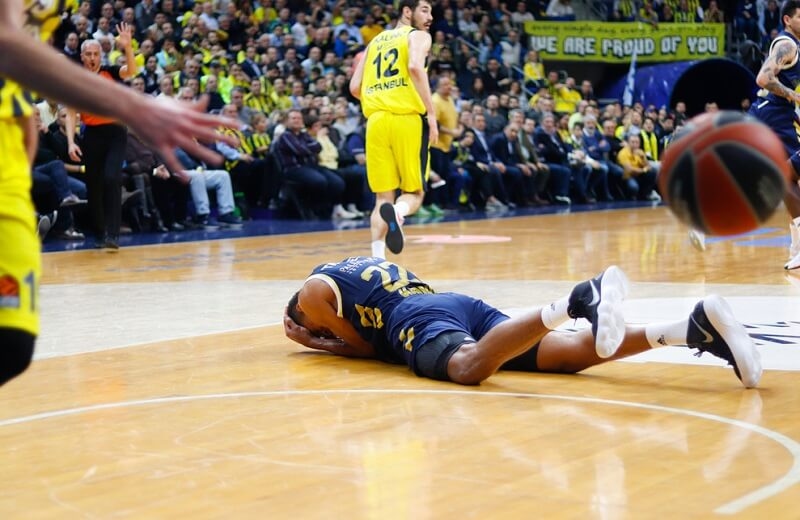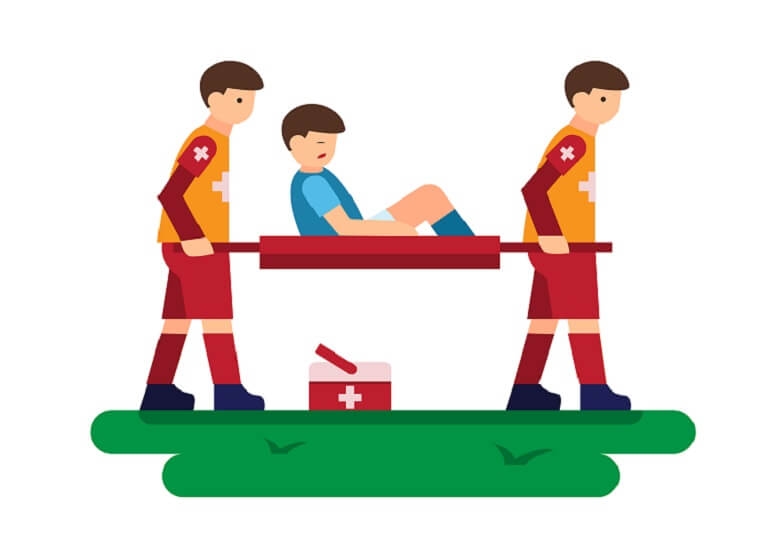
Close
Basketball, a fast-paced and physically demanding sport, often leads to various injuries that can have a significant impact on players' performance and overall well-being. From sprained ankles and knee ligament tears to fractures and concussions, basketball injuries are prevalent and can occur due to factors like intense physical contact, sudden direction changes, and high jumps. These injuries can result in players missing games or even entire seasons, affecting team dynamics and competitiveness. Effective injury prevention measures, such as proper warm-up routines, strengthening exercises, and the use of protective gear, are crucial in mitigating the risk. Additionally, prompt and comprehensive medical care, including rehabilitation and rest, plays a vital role in ensuring a player's recovery and return to the court.

Basketball is a popular sport that demands speed, agility, and physical prowess. However, with such intensity, injuries are an unfortunate part of the game. Whether it's a sprained ankle or a torn ligament, basketball players are susceptible to various injuries that can hinder their performance and even end their careers. Nevertheless, by understanding common basketball injuries and implementing preventive measures, players can significantly reduce the risk of injuries and safeguard their well-being on the court.
Ankle sprains are the most frequent basketball injury, occurring when the foot rolls inward or outward, stretching or tearing the ligaments that support the ankle. It often happens during sudden changes in direction or when landing after a jump.
The knees endure significant stress in basketball, making them vulnerable to injuries such as anterior cruciate ligament (ACL) tears, meniscus tears, and patellar tendinitis. These injuries can result from sudden stops or pivoting motions, collisions, or repetitive jumping and landing.
Basketball involves a lot of ball handling and catching, which can lead to finger injuries like dislocations, fractures, or jammed fingers. These injuries commonly occur when fingers get caught in an opponent's jersey or during collisions for rebounds.
The repetitive jumping, twisting, and sudden movements in basketball can strain the back muscles, leading to muscle spasms, sprains, or herniated discs. Poor posture, inadequate core strength, and improper lifting techniques can exacerbate these injuries.
Although not specific to basketball, concussions can occur due to collisions, falls, or accidental head contact during the game. Symptoms include headaches, dizziness, confusion, and memory problems. Prompt medical attention is crucial to ensure a safe recovery.
Warm-Up and Stretching: Prior to any basketball activity, a thorough warm-up is essential to prepare the body for physical exertion. Dynamic stretching exercises, focusing on the lower body, upper body, and core, help increase flexibility, improve blood flow, and reduce the risk of muscle strains.
Conditioning and Strength Training: Maintaining a strong physical condition is crucial in preventing injuries. Regular cardiovascular exercises, strength training, and agility drills improve overall fitness, stability, and muscular endurance, reducing the likelihood of injuries during intense gameplay.
Proper Footwear and Ankle Support: Wearing appropriate basketball shoes with good ankle support and cushioning is vital for injury prevention. Shoes should fit properly and offer stability and traction on the court. Ankle braces or tape can provide additional support and protect against sprains.
Technique and Biomechanics: Proper technique in jumping, landing, changing direction, and shooting can significantly reduce the risk of injuries. Coaches and trainers should emphasize correct form, body mechanics, and balance during training sessions. Players should focus on maintaining good posture and landing softly to reduce stress on the joints.
Rest and Recovery: Adequate rest and recovery periods are crucial for preventing overuse injuries. Players should schedule regular rest days, avoid excessive training or playing on multiple teams simultaneously, and listen to their bodies. Recovery strategies such as ice baths, massages, and stretching post-workout can help alleviate muscle soreness and promote faster healing.
Protective Gear: Utilizing appropriate protective gear is essential for injury prevention. Mouthguards can reduce the risk of dental and jaw injuries, while padded compression garments can provide additional support and protection for the muscles and joints. Goggles may be necessary for players with a history of eye injuries.

One of the most shocking and gruesome injuries in basketball occurred during the 2013 NCAA Tournament when Kevin Ware, a player for the Louisville Cardinals, suffered a compound fracture of his right leg. Landing awkwardly after attempting to block a shot, his leg snapped, causing an open fracture that left spectators and players in shock. The incident showcased the fragility of the human body and the potential dangers of high-impact sports.
Shaun Livingston's career was almost cut short in 2007 when he suffered a catastrophic knee injury. While driving to the basket, Livingston's left knee buckled, resulting in a dislocated left kneecap, torn ACL, PCL, and lateral meniscus, among other injuries. The severity of the injury raised concerns about player safety and highlighted the importance of proper conditioning and injury prevention programs.
Grant Hill was an immensely talented player who endured a series of ankle injuries throughout his career. In 2000, he suffered a severe ankle sprain that eventually led to multiple surgeries and complications. Hill's injuries not only affected his playing ability but also served as a reminder of the long-lasting impact that ankle injuries can have on a player's career.
Derrick Rose, the youngest player to win the NBA MVP award, experienced a devastating setback in 2012 when he tore his ACL during a playoff game. The injury sidelined him for the entire following season and significantly affected his explosiveness and confidence upon his return. Rose's injury highlighted the importance of proper rehabilitation and mental fortitude during the recovery process.
During a Team USA scrimmage in 2014, Paul George suffered a horrific leg fracture when he landed awkwardly after contesting a shot. The injury not only caused George to miss the remainder of the season but also raised concerns about the potential risks associated with players participating in international competitions. George's injury prompted a reevaluation of safety protocols and sparked discussions on the balance between representing one's country and individual player health.

The aforementioned devastating injuries have left a lasting impact on the basketball community and have prompted various safety measures to protect players in the future. These measures include:
Enhanced Medical Staff and Facilities: Professional teams and organizations have increased their focus on providing top-notch medical staff and facilities to promptly diagnose and treat injuries. Access to specialists and state-of-the-art equipment ensures the best possible care for injured players.
Improved Rehabilitation and Conditioning Programs: The significance of proper rehabilitation and conditioning cannot be overstated. Teams now invest in comprehensive programs aimed at strengthening players' bodies, reducing the risk of injuries, and facilitating a safe and efficient return to play after an injury.
Rule Changes and Player Protection: Basketball governing bodies have implemented rule changes to prioritize player safety. These changes include stricter guidelines regarding dangerous plays, reducing the risk of collisions, and implementing protocols for player contact and physicality.
In conclusion, basketball injuries are an unfortunate reality of the sport. From ankle sprains to knee ligament tears, players face various risks when competing on the court. These injuries can have significant physical, emotional, and financial consequences for both professional athletes and recreational players. However, it is important to note that steps can be taken to minimize the occurrence and severity of basketball injuries. Proper training, warm-up exercises, conditioning, and wearing appropriate protective gear are crucial in preventing and reducing the risk of injuries. Additionally, prompt and effective medical care, along with rehabilitation and injury prevention programs, play vital roles in ensuring the recovery and long-term well-being of basketball players. Through awareness, education, and proactive measures, the basketball community can strive towards safer and more enjoyable experiences on the court.